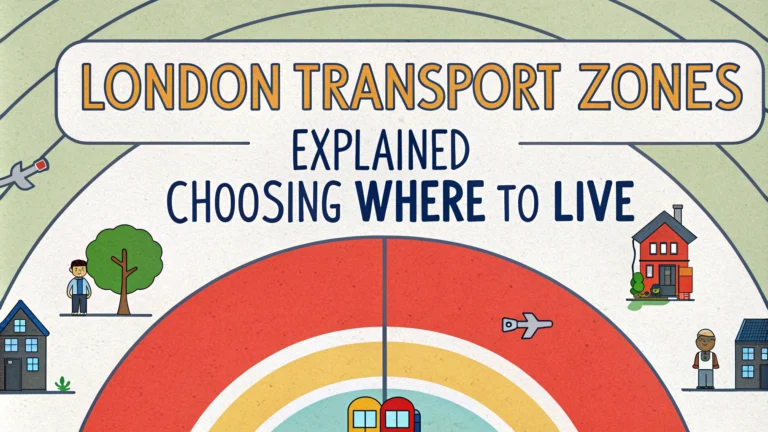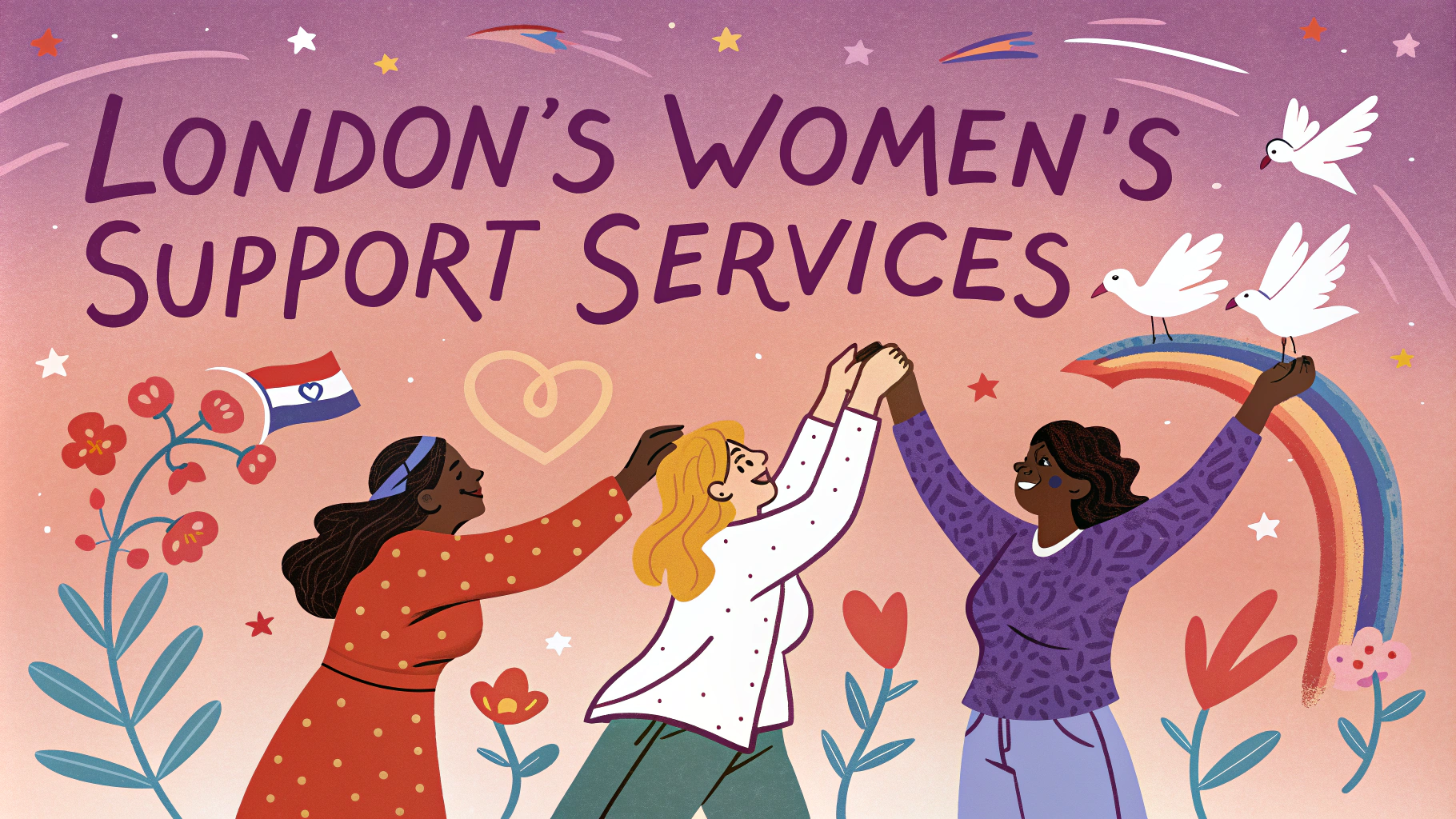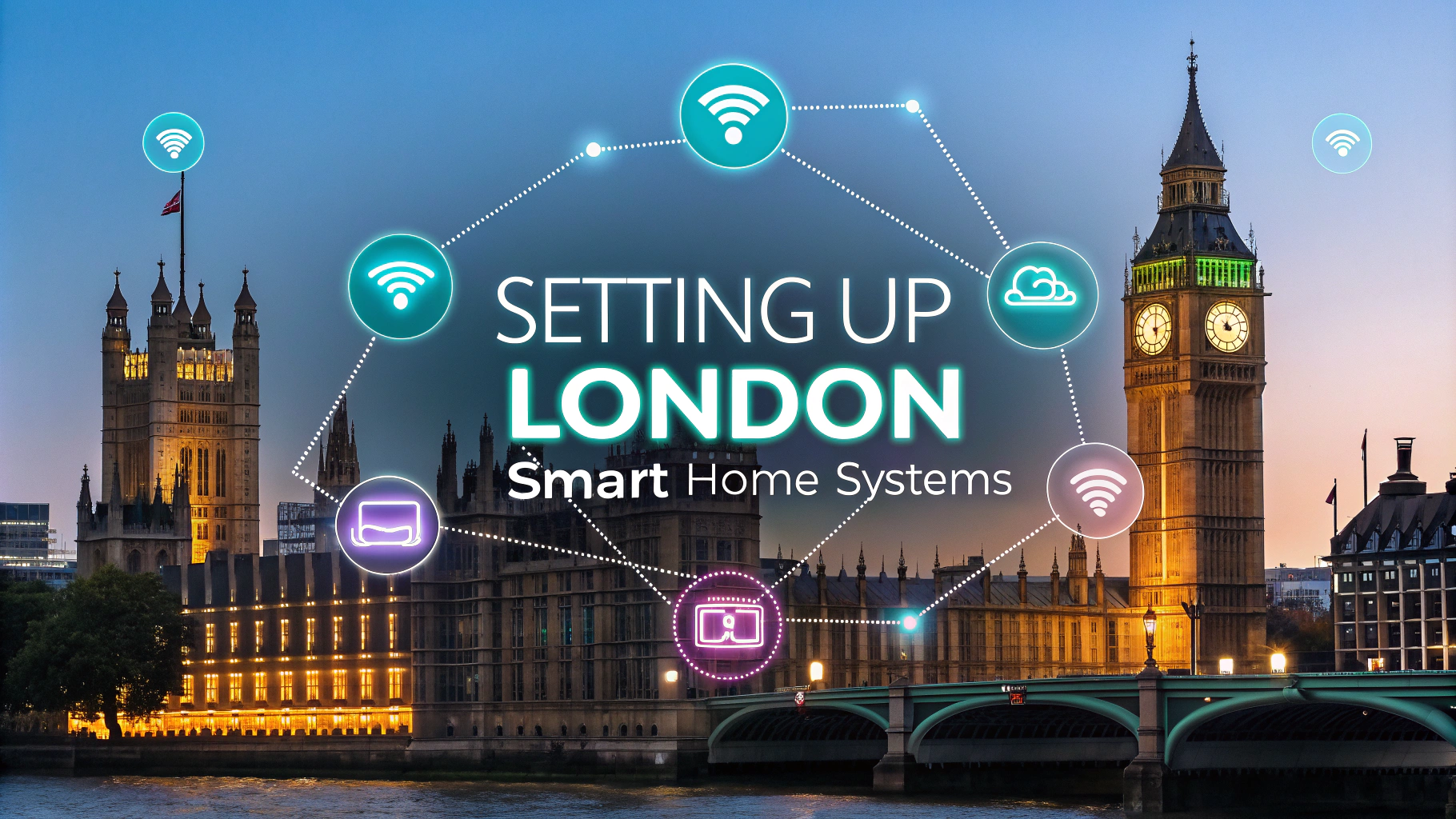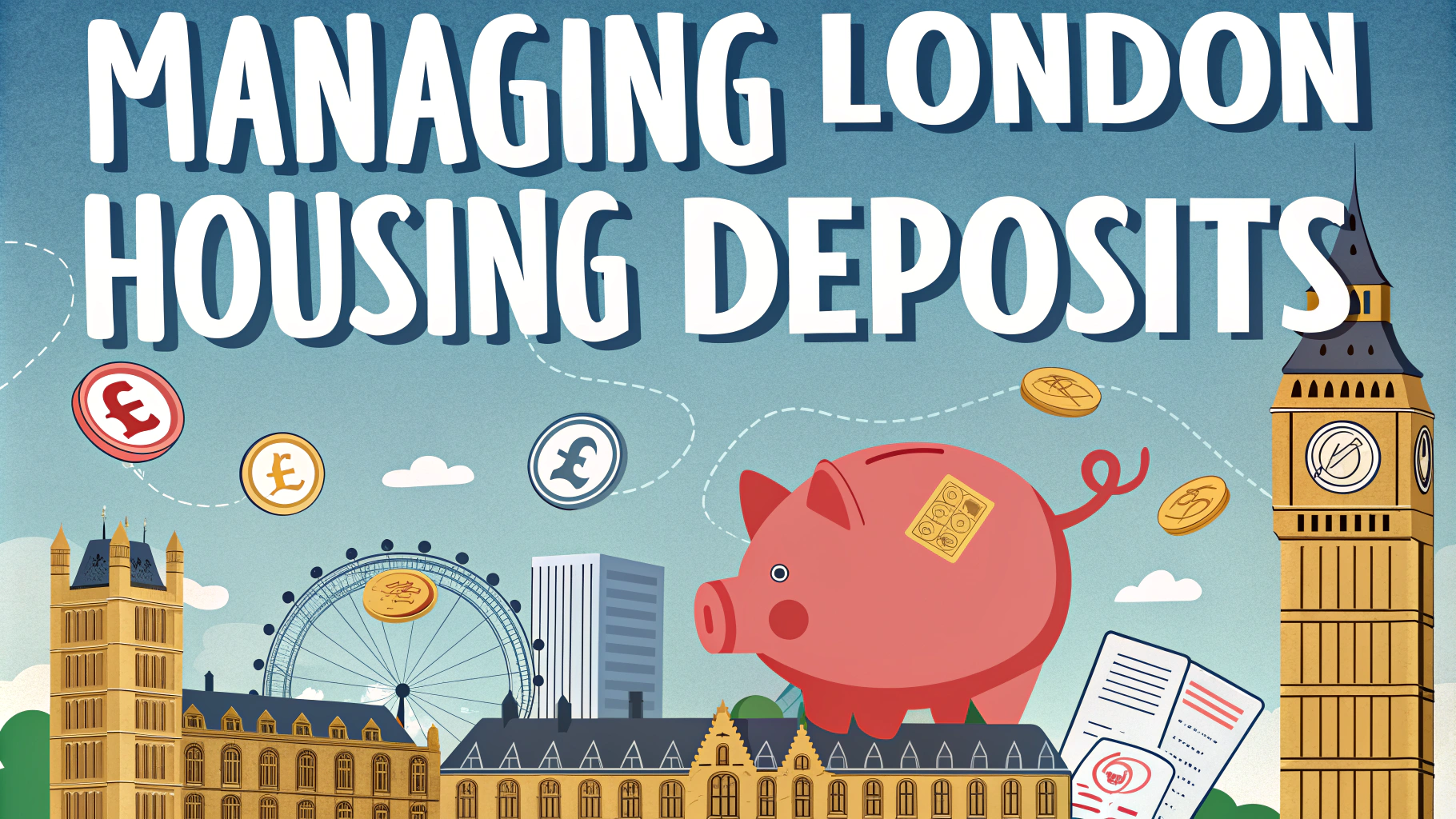London’s transport zone system affects everything from your daily commute costs to rental prices and quality of life.
Understanding how London’s transport zones work helps you make smarter decisions about where to live based on your budget and lifestyle needs.
This guide breaks down London’s transport zones and helps you choose the best area for your needs.
London Transport Zones Overview
London is divided into 9 transport zones, with Zone 1 being the central area and Zone 9 being the outermost region.
Zone 1 covers central locations like Westminster, The City, and Covent Garden.
The zones form concentric circles around central London, with travel costs increasing as you move outward.
Cost Implications of Different Zones
- Zone 1-2 monthly travel card: £142.10
- Zone 1-3 monthly travel card: £167.10
- Zone 1-4 monthly travel card: £204.30
- Zone 1-5 monthly travel card: £242.20
- Zone 1-6 monthly travel card: £259.10
Rental Price Differences by Zone
| Zone | Average Monthly Rent (1 bed) |
|---|---|
| Zone 1 | £2,000+ |
| Zone 2 | £1,500-1,800 |
| Zone 3 | £1,200-1,500 |
| Zone 4 | £1,000-1,300 |
Popular Areas by Zone
Zone 1
- Covent Garden – entertainment hub
- Westminster – political center
- The City – financial district
Zone 2
- Camden – vibrant culture scene
- Shoreditch – trendy nightlife
- Hammersmith – riverside living
Zone 3
- Finsbury Park – green spaces
- Clapham – young professional hub
- Stratford – Olympic legacy area
Making Your Decision
Calculate your total monthly costs including rent and transport before choosing a zone.
Consider your workplace location and typical commute times from different zones.
Factor in lifestyle preferences like nightlife, green spaces, and local amenities.
Smart Tips for Zone Selection
- Living near a zone boundary can offer better value
- Check if your workplace offers season ticket loans
- Consider cycling to reduce transport costs
- Look for areas with good night bus connections
- Research local amenities to reduce travel needs
Transport Zone Resources
Check the TfL website (tfl.gov.uk) for up-to-date fare information and zone maps.
Use the TfL Journey Planner to calculate commute times from potential areas.
Visit local estate agents’ websites to compare rental prices across different zones.
Planning Your Move
Book viewings in different zones to get a real feel for areas.
Test your potential commute during rush hour before committing to an area.
Join local Facebook groups or forums to learn about different neighborhoods from residents.
Quality of Life Considerations
Different zones offer varying lifestyles and community atmospheres:
Inner Zones (1-2)
- Bustling city atmosphere
- Walking distance to major attractions
- Higher noise levels
- Limited green spaces
Middle Zones (3-4)
- Balance of urban and suburban life
- More residential communities
- Better value for space
- More local parks
Outer Zones (5-9)
- Quieter, family-friendly areas
- Larger properties available
- More green spaces
- Longer commute times
Hidden Costs to Consider
- Council tax variations between boroughs
- Additional bus connections needed
- Parking permit costs
- Local amenity prices
- Entertainment travel costs
Making London’s Zones Work for You
Choose a zone that aligns with both your budget and lifestyle priorities. Consider the total cost of living, not just rent or transport in isolation.
Research thoroughly and visit areas at different times of day before making your decision.
Remember that finding the right balance between location, cost, and quality of life is key to making the most of living in London.
FAQs
- What are London Transport Zones and how many zones are there?
London’s public transport system is divided into 9 concentric zones, with Zone 1 being the central area. The zones determine fares for travel on London Underground, Overground, and most National Rail services. - Which areas are considered Zone 1?
Zone 1 covers central London locations including Westminster, Covent Garden, The City, South Bank, Borough, and parts of Camden. Major stations like King’s Cross, Liverpool Street, and London Bridge are in Zone 1. - How much more expensive is it to live in Zone 1 compared to outer zones?
Living costs in Zone 1 are typically 30-50% higher than outer zones. While rent in Zone 1 might average £2,000-£3,000 per month for a one-bedroom flat, similar properties in Zone 4 might cost £1,200-£1,500. - What are the best value-for-money zones to live in?
Zones 3 and 4 often offer the best balance between affordability and commute times. These zones include popular residential areas like Wimbledon, Walthamstow, and Greenwich, with good transport links and lower rental costs. - How do transport costs vary between zones?
Travel costs increase with each zone crossed. A Zone 1-2 annual travelcard costs approximately £1,536, while a Zone 1-4 card costs around £2,128 (2023 prices). - Which zones are best for families?
Zones 4-6 are typically more suitable for families, offering larger properties, more green spaces, and better schools. Areas like Richmond (Zone 4), Sutton (Zone 5), and Uxbridge (Zone 6) are popular family locations. - How do commute times differ between zones?
Average commute times to central London (Zone 1) are: Zone 2: 15-20 minutes, Zone 3: 25-30 minutes, Zone 4: 35-40 minutes, Zone 5: 45-50 minutes, Zone 6: 50-60 minutes. - What’s the difference between living in North vs South London zones?
North London zones typically have more Underground connections, while South London relies more on National Rail and bus services. South London zones often offer better value for money but might have longer commute times. - Are there any areas that offer Zone 2 prices but Zone 1 proximity?
Some areas like Bermondsey, Whitechapel, and parts of Vauxhall are technically in Zone 2 but within walking distance to Zone 1, offering better value while maintaining central location benefits. - How do night transport options vary between zones?
Zones 1-3 have the best night transport coverage, with 24-hour Night Tube services on weekends and extensive night bus routes. Outer zones typically have fewer night transport options.







